One of my favourite collections of photographs was created by the youngest photographer in the museum archive, a 14-year-old Victorian schoolboy called George Tod. The beautifully composed photographs are complemented by a set of letters written by George to his brother James in the mid-1890s. These tell us that his hobby outside school hours was photographing locomotives, especially the most modern ones for the time.
One of his favourite haunts was the Great Western Railway yard at Westbourne Park, London. A locomotive that he was particularly interested in seeing was number 3012 “Wigmore Castle” and on one occasion he was given permission by the foreman to photograph it just before it went out on a service. According to one of the letters, the ensuing photo opportunity was very rushed, with the signalman shouting that there wasn’t time. The resulting photographs didn’t come out well, so George and his companion, Marcus, went back later in the week and this time the “Wigmore Castle” was hauled out especially for them and George took two good photographs of it. One of these was spoilt in development—George did his own developing—but the other “came out very splendidly, not a spot on it and very clear”.
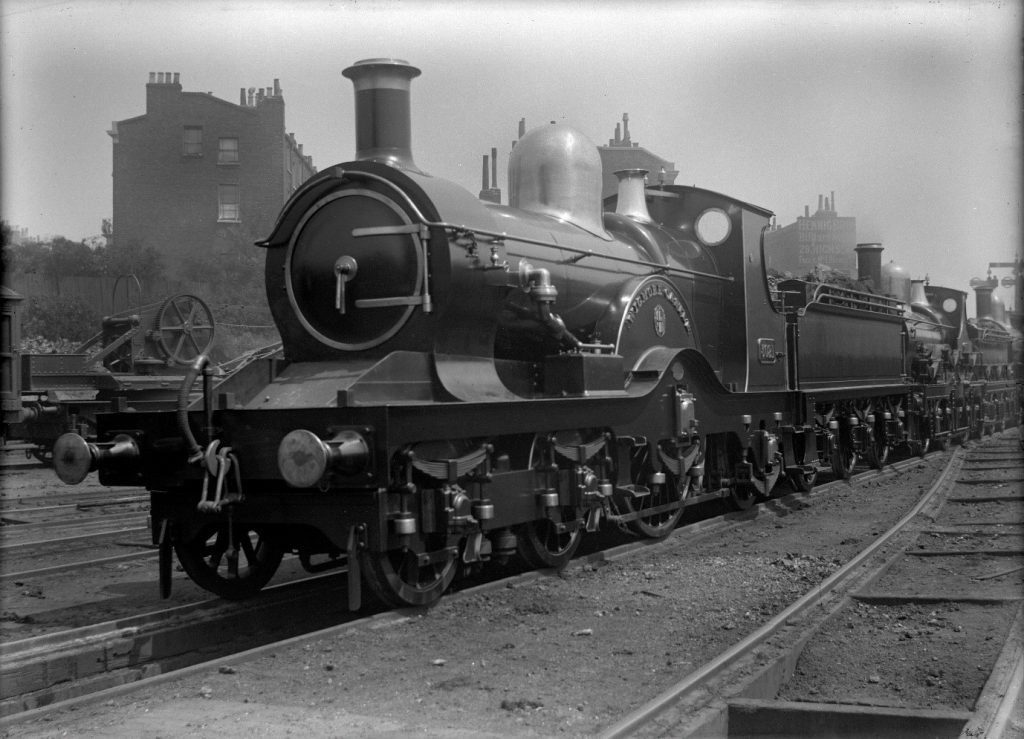
Several of George’s photographs were taken at railway stations, but he also used locations that were not open to the public, like engine sheds and yards where the light was better and locomotives could be put into position for him to photograph. He was not afraid to ask senior managers for permission, but sometimes this became an adventure in itself. To get access to the Midland Railway sheds at Kentish Town he needed to approach the superintendent of locomotives, Robert Weatherburn, who was known to be a formidable character.
“I presented myself tremblingly at his door which was opened after some time by…a man encircled in a cloud of smoke [who] thumped up and yelled at me what I wanted so I showed him the letter and told him plainly what I wanted. At first he shook his head and said no but then he read the letter & said they did not often allow that sort of thing. Then he said I would not interfere with the drivers or anybody, so I informed him that that statement was correct so he said he thought he could allow me…”
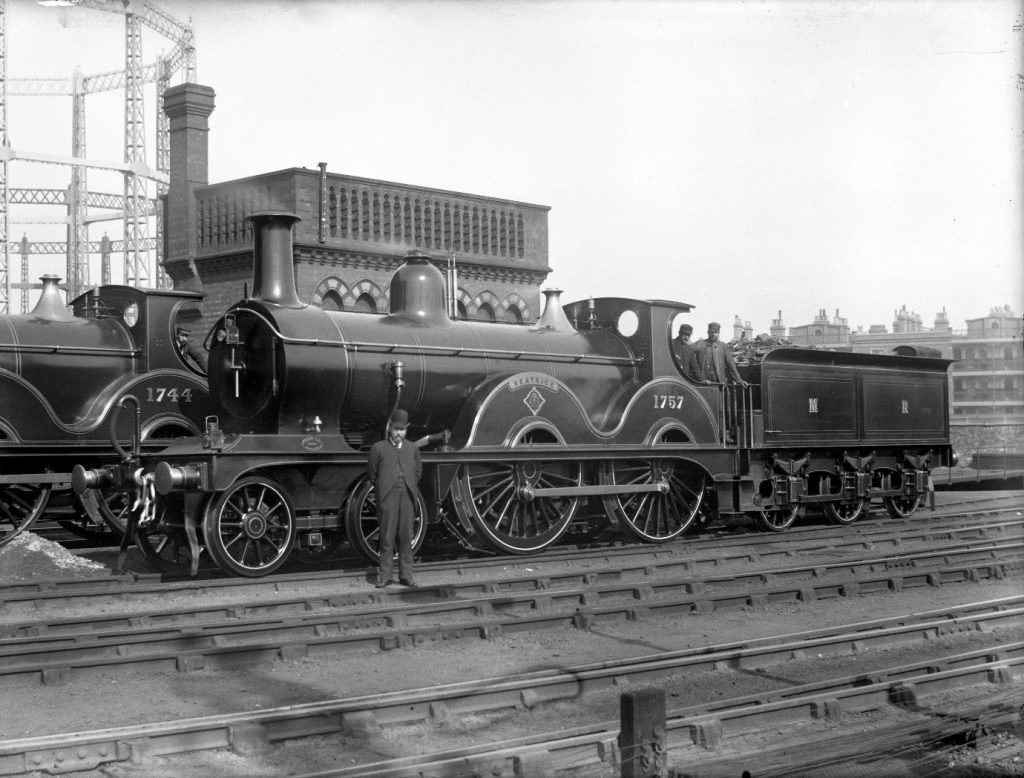
It has been suggested that the figure posing in front of the locomotive “Beatrice” is Robert Weatherburn, Superintendent of Locomotives.
George and Marcus enjoyed their visits to St Pancras, especially the time when they jumped onto a locomotive while it was being shunted, “and when it had finished and the other was about to do its shunting, Marcus quickly jumped on it and so got two rides”. It’s impossible to imagine this happening in our more health-and-safety-conscious age.
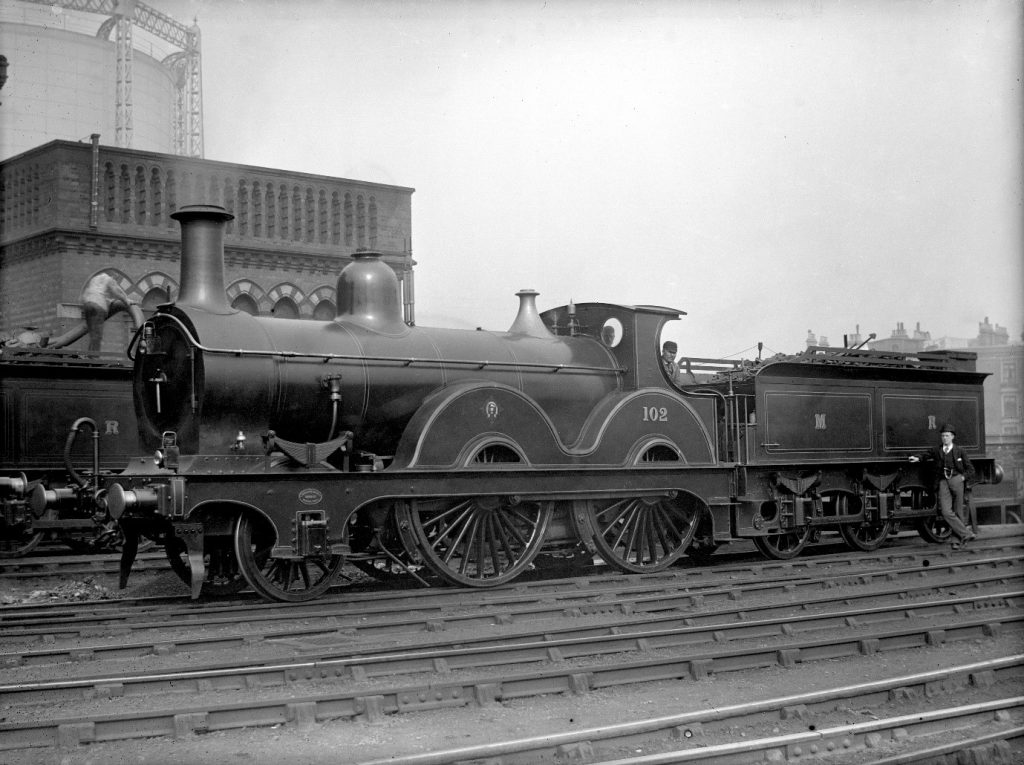
Could the smartly dressed young man leaning against the tender on the right of the picture be Marcus?
In one of the letters George tells James that he has been given permission by Patrick Stirling, chief engineer of Great Northern Railway, to take photographs at King’s Cross. He and Marcus were delighted to find some brand new locomotives there (designed by Stirling himself). Both boys took photographs.
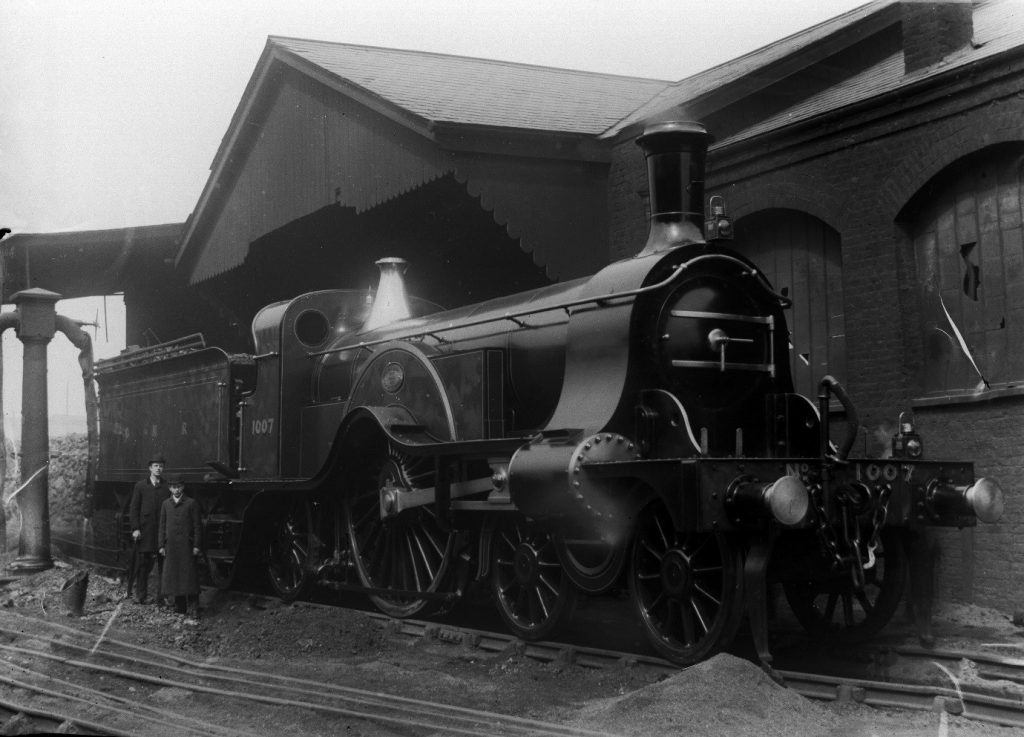
We don’t know the identities of the two young men posing next to the Great Northern Railway locomotive number 1007, but we can tell from their smart clothes that they are not railwaymen. They are likely to be George’s companions Marcus and Perry, but one of them could even be George himself, if Marcus took the photograph.
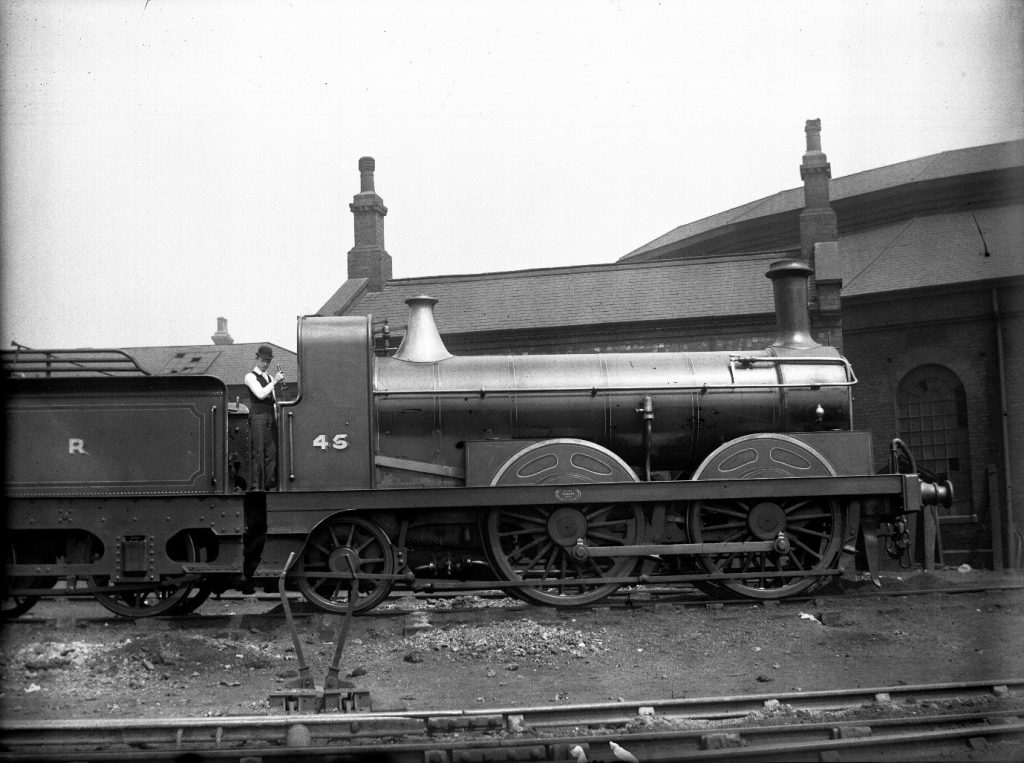
It has been suggested that this photograph is of George standing on the footplate of an older locomotive at Kings Cross.
I was intrigued to find out more about George and his family and discovered that Marcus was in fact another of George’s brothers. Their father, John Tod, was a Scottish tea merchant and their mother, Gertrude, was of German origin. She was the daughter of Marcus Von Niebuhr, a privy councillor to the King of Prussia, and she was born at Sans Souci, the royal summer palace near Potsdam. Her grandfather, Berthold Georg Niebuhr, was an illustrious and well-known historian.
The letters bring the collection of photographs vividly to life. They not only let us read about George Tod’s experiences first hand, but they have provided a rich resource for researching his family history and its links to royalty in Prussia.
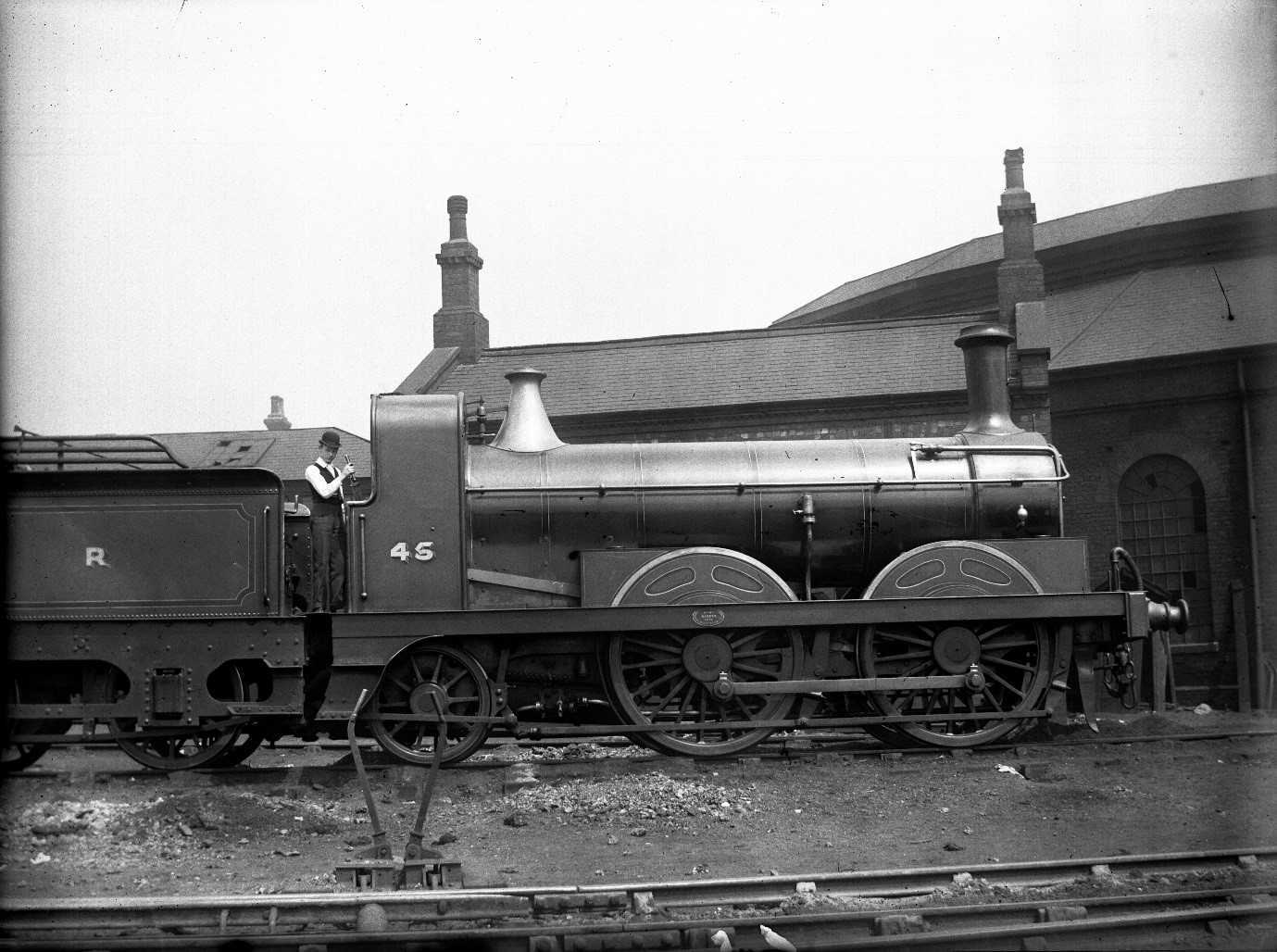
What a wonderful and enthralling story, and what beautiful photographs. Thank you so much for making this delightful archive available. I am curious to know more of George’s story and wonder what became of him in adult life. I like to think that by 1914 he was possibly too old to serve in the armed forces and missed out on that terrible experience, but one wonders.
Gorgeous photos. My favorite period.
Are there more ?
Thank you for this article. A pleasing mental time travel in an age where railways were what networked computers are today.
And asking permission to take a photo of a brand new steam engine to the engine designer itself is … no word to express it, sorry!
Absolutely wonderful ! The negatives were probably on glass, in a large format. The story is also interesting, it shows that it is worth asking. These young lads never imagined that, more than one century later, their pictures can be appreciated via a technology called Internet. Thank you for sharing these gorgious prints and story.
What gorgeous photographs of what for the time were at the cutting edge of steam engine development, crisp and clear they look as though they could have been taken yesterday, not about 120 years ago, they would make an interesting book. Any chance of this, please?
Hi,
Do you have more photographs from George Tod? The detail is very sharp and clear and conveys a great deal of information.
Thank you,
Paul
Concerning:
BY ANNE MCLEAN ON 13 MARCH 2019
THE ADVENTURES OF A YOUNG VICTORIAN TRAINSPOTTER
Dear Anne,
What wonderful photographs! I have just come across your article looking for any leads about the descendants of Marcus Tod. Once his interest in trains had worn off, he became a very distinguished Oxford academic. A colleague of mine wishes to include some of his letters in a collection of correspondence of the Roman historian Ronald Syme, and we are trying to trace relatives to ask for permission. I’d be grateful for any ideas at all.
Absolutely superb! THIS is what the NRMs photographic archive should be doing, dispelling the public perception that Mallard, Flying Scotsman and Rocket are the sum total of steam locomotive history! Any photographic archive is only any use if it’s seen! My sincere congratulations to you Anne McLean.
What a great book .I am a stream train fan and this book says a lot about the locos we are so lucky to have today..
Superb blog terrific pics Give us more please
unrelated to the article but is there anything about the somerset and dorset joint railway or the chippenham to calne branch on the website?
Marcus Niebuhr Tod, OBE, FBA (1878–1974) was a British historian and epigraphist. He was a fellow of Oriel College, Oxford, from 1903 to 1947, and Reader in Greek Epigraphy at the University of Oxford from 1927 to 1947.
Early life, education and the British School at Athens
Born in Highgate on 24 November 1878, Tod’s father was a Scottish tea merchant; his mother was the daughter of the Prussian courtier Marcus von Niebuhr, and the granddaughter of the German-Danish historian Barthold Georg Niebuhr. Tod was educated at St John’s College, Oxford, as a scholar, taking a first-class BA in classics in 1901.[1]
After graduating, Tod spent four years as a senior student at the British School at Athens, supported by a Craven scholarship from the University of Oxford and a further scholarship from his old college.[1] In 1902, he was appointed assistant director and librarian of the School and accompanied the director Robert Carr Bosanquet on excavations from 1903.[2]
Academic career and research
Tod was elected to a fellowship at Oriel College, Oxford, in 1903 and took up teaching when his studentships ended in 1905. From 1907, he lectured on Greek epigraphy in the university and was promoted to a readership twenty years later.[2] During the First World War, he worked for the Ministry of Labour and then for most of the period between 1915 and early 1919 in Salonika as an interpreter and officer in the Intelligence Corps (being appointed an Officer of the Order of the British Empire for his service).[1] Todd returned to teaching (which he enjoyed) and between 1934 and 1945 he was vice-provost at Oriel College.[2]
While at the British School in Athens, Tod became interested in Spartan epigraphy, and also carried out investigations in Laconia. These led to several articles on the topics and he worked with Alan Wace to produce a catalogue of the Spartan Museum in 1906. In 1912, he won the Conington Prize at Oxford for his essay “Greek International Arbitration” which was published in 1913. He wrote a chapter for the fifth volume of The Cambridge Ancient History (1927) and three of his lectures delivered at University College London were published as Sidelights on Greek History (1933). In 1933 and 1948, he published a two-volume work, Greek Historical Inscriptions.
Fabulouss photographs